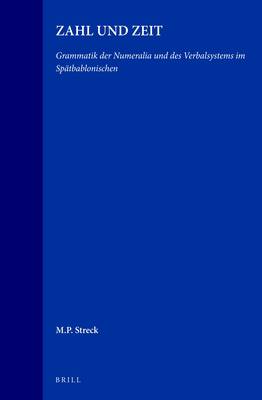
- Afhalen na 1 uur in een winkel met voorraad
- Gratis thuislevering in België vanaf € 30
- Ruim aanbod met 7 miljoen producten
- Afhalen na 1 uur in een winkel met voorraad
- Gratis thuislevering in België vanaf € 30
- Ruim aanbod met 7 miljoen producten
Zoeken
€ 248,95
+ 497 punten
Omschrijving
Late Babylonian letters and documents are among the earliest cuneiform texts to have been published in the field of Ancient Near Eastern studies and form a major corpus of Akkadian texts, yet the language in which they were written has rarely been investigated. The present study paves the way for a comprehensive description of Late Babylonian by examining in detail two traditionally difficult subjects in Assyriology: morphology and syntax of numerals and the functions of verbal forms expressing " time". Using modern linguistic methods and illustrated by more than 1200 examples, it attempts to explain Late Babylonian in the context of Akkadian and of Semitic. The emerging picture of the Late Babylonian language differs radically in many ways from traditional descriptions of Akkadian and offers surprising insights into Akkadian grammar. The concluding index is an invaluable tool which provides an overview of the vast field of Late Babylonian literature. This study is addressed to Assyriologists, Aramaic scholars, Semitists and linguists.
Specificaties
Betrokkenen
- Auteur(s):
- Uitgeverij:
Inhoud
- Aantal bladzijden:
- 324
- Taal:
- Duits
- Reeks:
- Reeksnummer:
- nr. 5
Eigenschappen
- Productcode (EAN):
- 9789072371850
- Verschijningsdatum:
- 1/01/1995
- Uitvoering:
- Hardcover
- Formaat:
- Genaaid
- Afmetingen:
- 155 mm x 235 mm
- Gewicht:
- 861 g

Alleen bij Standaard Boekhandel
+ 497 punten op je klantenkaart van Standaard Boekhandel
Beoordelingen
We publiceren alleen reviews die voldoen aan de voorwaarden voor reviews. Bekijk onze voorwaarden voor reviews.








